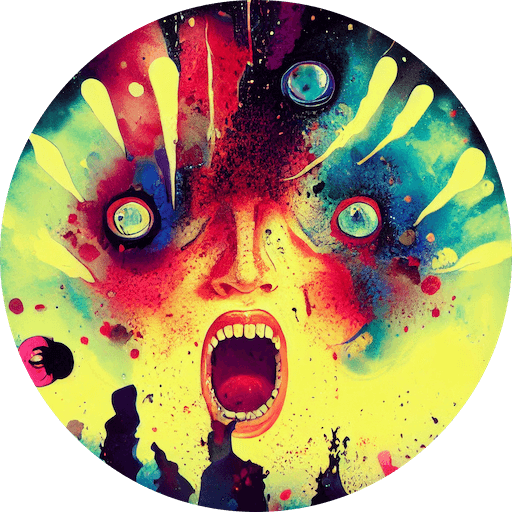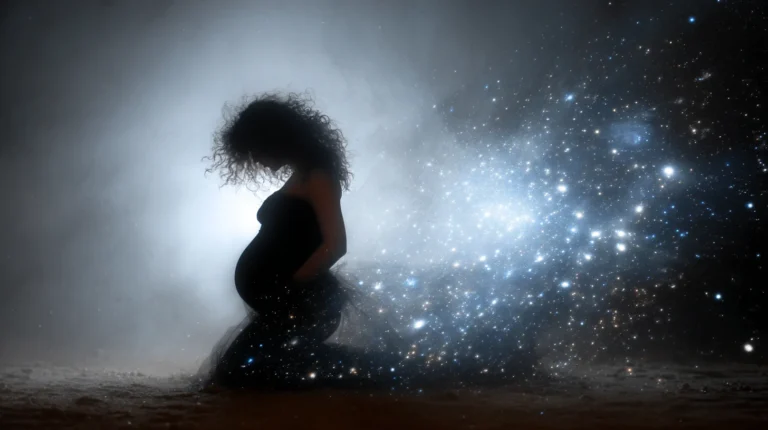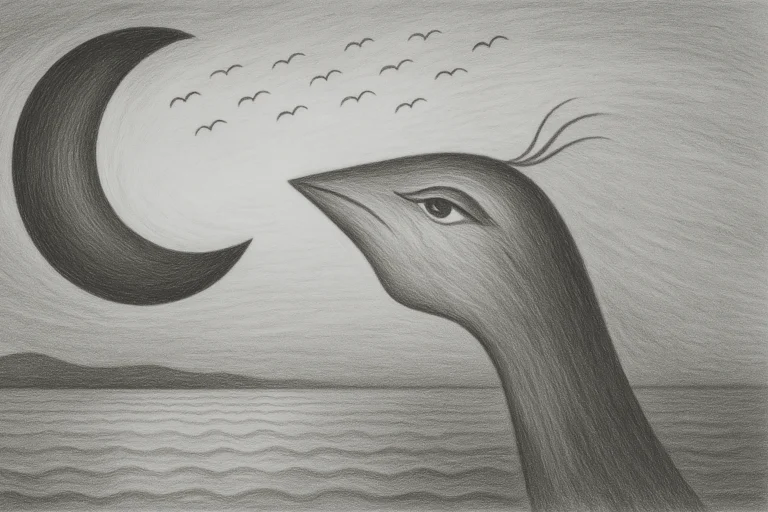From Gods to Heroes to Humans
We have come two stages: first, from the immediate emanations of the Uncreated Creating to the fluid yet timeless personages of the mythological age; second, from these Created Creating Ones to the sphere of human history. The emanations have condensed, the field of consciousness constricted. Where formerly causal bodies were visible, now only their secondary effects come to focus in the little hard-fact pupil of the human eye. The cosmogonic cycle is now to be carried forward, therefore, not by the gods, who have become invisible, but by the heroes, more or less human in character, through whom the world destiny is realized.
… [Then] The heroes become less and less fabulous, until at last, in the final stages of the various local traditions, legend opens into the common daylight of recorded time.
—Joseph Campbell, The Hero With a Thousand Faces
The passage traces a three-step arc of growing self-reliance: first, reality is credited to pure, unseen forces spilling straight from an “Uncreated Creating” source; next, those forces crystallise into mighty culture-heroes—half god, half human—who forge nets, ploughs and medicines for a still-childlike society; finally, the spotlight settles on fully human actors whose recorded deeds show that progress now depends on ordinary judgment, cooperation and skill.
In other words, civilisation graduates from relying on divine thunder to trusting everyday wisdom, and that same curve appears in personal practice: beginner meditators may chase glowing visions the way early tribes chased gods, but mature practice sheds the spectacle, meeting each breath with clear, grounded attention—proof that the highest power is the simple capacity to see and act here and now.
Meditation is not an escape hatch.
You do not sit down to vanish into “higher realms” or gain magic powers. You sit to meet life as it is, right now.
Strange sights are normal—and harmless.
While meditating you might see colours, faces, dream-like scenes. Carl Jung would call them symbols: the mind talking to itself in pictures. They are just experiences passing through memory and imagination.
Meaning comes from you.
If an image feels important, fine—treat it like a personal poem and ask what it means for your life. That is creativity at work, not a message from outside the universe.
Stay grounded.
The risk is getting hooked on the show—chasing visions, shadow-work thrills, “wo-wo” trips. Enjoy them if they come, but keep your feet on the floor and your eyes on the day ahead.
Behind the curtain is more curtain.
Look long enough and you see that gods and demons are mind-made puppets. The same life that paints them is the life turning the kettle on and paying rent.
How this mirrors ordinary human growth
- Childhood: We love fairy tales and want superheroes to fix everything.
- Adolescence: We dream up bold identities and experiment with extremes.
- Adulthood: We realise the power is in our own choices, here on earth, among family, work, and friends.
Meditation follows the same curve. Early on it feels like a doorway to secret kingdoms. Later you learn its real gift: steady attention, even breath, clear seeing. That clarity lets you handle joy, pain, work, and love without being yanked around by every passing thought.
Linking it back to practice
So sit, breathe, watch. When visions rise, notice them as you would clouds. If one holds a useful message, great—use it. If not, let it drift. The aim is not to fly away but to land fully in the one place you actually live: this moment, this body, this world.
Now is required no incarnation of the Moon Bull, no Serpent Wisdom of the Eight Diagrams of Destiny, but a perfect human spirit alert to the needs and hopes of the heart.
—Joseph Campbell, The Hero With a Thousand Faces
Thought is the brain’s nonstop electrochemical chatter—patterns of firing neurons stitching perception, emotion, and habit into a running commentary that lets us predict what might happen next; memory is the residue of that firing, physical changes in neural networks laid down by experience and genetics, so every “now” arrives pre-coloured by everything that went before; the present itself is only the razor-thin slice where incoming sensory data meets that stored past and the brain instantly projects a likely future, which means pure “living in the present” in the mystical sense is neurologically impossible—attention can shift toward the fresh portion of experience, but the system that generates attention is built on memory and forecasts.
Trauma shows how hardwired this loop is: a trigger hits, the old network lights up, hormones flood, the body prepares for the danger it once survived, and the sequence feels inescapable.
Can it heal? Often you can re-encode the memory—through exposure therapy, EMDR, somatic work, medication, plain talk with someone who won’t flinch—but you rarely delete it; you build parallel circuits that keep the older ones from hijacking the moment.
Genetics and upbringing set starting conditions: some nervous systems are born with hair-trigger alarms, some with thicker emotional shock absorbers. No technique rewrites the chromosome or erases the first decade of life; the “real work” is learning exactly how your particular wiring misfires and then installing guardrails—sleep discipline, exercise, breath control, social connection, sometimes pharmaceuticals—that shorten the flare-ups and widen the space between impulse and action.
The payoff isn’t an eternal lotus-blossom present; it’s the pragmatic freedom to notice, “Here comes the storm,” ride it out, and choose the next move with a little less automatic pain. That may sound unromantic, but it’s how plastic brains actually change: incrementally, through thousands of small, boring, repeatable acts that carve a calmer groove beside the old ruts.
And that, my friend, is why we’re screwed. Still, the wiring in our brains keeps pushing us forward—so one more time, let’s do it. Even the urge to escape is preconditioned. Behind the curtain are only puppets of imagination; the same life pulses everywhere, never quite the fantasy we picture. Life feeds on life, and there’s no one to complain—just life.
Choose your own moves. The stage already echoes with the amplified voices of billionaires, influencers, and polished heroes—each hawking a script of their own. Their victories suit their wiring and their luck. Copying them is like stepping into a suit cut for another body.
Feel where you stand in this vast play. Notice the props life has handed you, the lines your history keeps whispering, the tone your nervous system favors. Act from that spot with eyes open. If you need to cry, cry. If you want to laugh, laugh. If anger comes, use its heat to hammer something useful.
Authenticity is not a slogan; it is the one force that cannot be faked because it starts inside the skin and pushes outward. Frameworks designed by the fortunate often become cages for everyone else.
Tear the cage if it does not let you breathe. Think for yourself, live as yourself, and remember that the ending is the same for every cast member. We go down, the curtain drops, and life keeps eating life. The freedom is in choosing how you dance before the lights go out.
The person beside you matters more than any boss, politician, celebrity, or distant god, because your survival depends on theirs and theirs on yours. Celebrities broadcast slogans only because someone higher up signs their checks; their propaganda serves their paymasters, not you.
Life itself runs on a different law: each cell shields the cell next to it, not out of charity but out of necessity. Never rely on those at the top—their game is not your game, their survival is not your survival. Common people can save only common people, just as one cell can safeguard only the cell beside it.
- Powerful people have always made deals with other powerful people to protect their own wealth and status.
- Ancient Rome: rich “patrons” gave favors to clients and got votes and loyalty back.
- Julius Caesar, Pompey, and Crassus formed a secret three-man pact to share power and bypass the Senate.
- Medieval popes and kings lavished jobs, lands, and titles on relatives or big lenders; the lenders then bankrolled the ruler.
- Renaissance banker Jakob Fugger financed emperors and, in return, got monopoly mining rights.
- 19th-century “robber barons” bribed lawmakers for railroad and oil deals; politicians pocketed cash or stock.
- Modern politics: donors get peerages in Britain, top contracts in the U.S., or cheap state assets in Russia; the politicians get campaign money and media support.
- The “revolving door” lets ex-officials slide into high-paid industry jobs, rewarding them for friendly policies.
- Billionaires often run for office themselves, blending money and power in one person.
- Celebrities trade their fan base for political access; politicians trade visibility and status back to the stars.
- Leaked files like the Pandora Papers show leaders and tycoons hiding money together in offshore havens.
- Biology explains the pattern: cells, animals, and humans help neighbors who can help them—“reciprocal altruism.”
- Kin favoritism (nepotism) and tit-for-tat alliances are hard-wired survival strategies.
- These elite networks aren’t charity; they are calculated partnerships that benefit all insiders.
- Ordinary people rarely share in those gains; they must rely on each other, not on distant elites.
Bottom line: at every stage of history, elites save elites, just as one cell protects the cell beside it to keep the whole organism— or power structure—alive.
Dig deeper: see the attached PDF for the full research and detailed findings.
Every creature must bark from its own spot. That sound keeps it alive. If you chase celebrities to escape your life, remember their problems are not yours and their songs are not your songs. Look to politicians for a slogan and you speak words that will never feed you. Copy a celebrity’s guide on how to live and you lose the game before it starts, because they are only proving they exist. Turn to religion for orders and you hand the top tier an easy tool to herd the rest. Wake up. Stand where you stand.
Bark your own song, shout your own slogan, and remember: like a cell that thrives with the one beside it, the person next to you—and you yourself—are the true keys to this game.
Always stay clear on your own role, and whenever a flashy voice jumps in to sell its story, answer firmly: “That’s not my game.”
“Woof woof”







